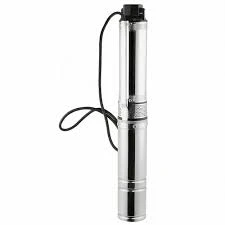Sep . 03, 2024 17:38 Back to list
deep submersible pump
The Importance of Deep Submersible Pumps in Modern Applications
Deep submersible pumps are essential devices in various industries, providing efficient water extraction from great depths. Unlike traditional pumps, which operate above ground, deep submersible pumps are designed to be submerged in the fluid they are pumping. This unique feature allows them to function optimally in environments where traditional pumps may struggle. Their widespread use in agriculture, municipal water systems, and industrial applications underscores their importance in modern society.
One of the primary advantages of deep submersible pumps is their ability to operate at significant depths, often exceeding hundreds of meters below the surface. These pumps consist of a series of stages that raise water to the surface. The motor is typically located above the pump unit, with a long shaft connecting it to the impeller assembly. This design minimizes the risk of cavitation—an issue that can plague surface pumps when they attempt to draw water from deep sources.
In agriculture, deep submersible pumps play a crucial role in irrigation systems. Farmers rely on these pumps to extract groundwater for crop irrigation, especially in arid regions where surface water may be scarce. By ensuring a consistent water supply, these pumps enable farmers to optimize crop yields and manage resources more effectively, contributing to food security.
deep submersible pump

Municipal water supply systems also benefit significantly from deep submersible pumps. Many urban centers depend on groundwater as a primary source of drinking water. These pumps provide a reliable means of accessing aquifers, helping to meet the daily water demands of communities. Additionally, they are increasingly used for wastewater management, transporting water away from treatment facilities and ensuring that municipal systems operate efficiently.
Moreover, deep submersible pumps are integral to industrial processes. In mining operations, for instance, they are used to dewater shafts and pits, allowing for safe and efficient extraction of minerals. They are also employed in geothermal energy applications, where they pump hot water or steam from beneath the Earth's surface. This versatility demonstrates the pumps’ critical role in resource extraction and energy production.
While the benefits are numerous, deep submersible pumps are not without their challenges. Regular maintenance is essential to ensure their longevity and optimal performance. Issues such as motor failure, wear and tear on the impeller, and clogging from debris can lead to costly downtimes. Therefore, operators must implement regular inspection schedules and adhere to manufacturer guidelines to keep these systems running smoothly.
In conclusion, deep submersible pumps are vital tools in various sectors, facilitating efficient water management in agriculture, municipal services, and industrial applications. Their ability to perform under challenging conditions makes them irreplaceable in today’s resource-driven world. As technology advances, the design and efficiency of these pumps are likely to improve, supporting sustainable practices and helping to meet the growing demand for water worldwide. Investing in advanced submersible pump technology is not just a step toward efficiency; it is a commitment to smart resource management in an increasingly water-scarce world.
-
Submersible Water Pump: The Efficient 'Power Pioneer' of the Underwater World
NewsJul.01,2025
-
Submersible Pond Pump: The Hidden Guardian of Water Landscape Ecology
NewsJul.01,2025
-
Stainless Well Pump: A Reliable and Durable Pumping Main Force
NewsJul.01,2025
-
Stainless Steel Submersible Pump: An Efficient and Versatile Tool for Underwater Operations
NewsJul.01,2025
-
Deep Well Submersible Pump: An Efficient 'Sucker' of Groundwater Sources
NewsJul.01,2025
-
Deep Water Well Pump: An Efficient 'Sucker' of Groundwater Sources
NewsJul.01,2025
-
 Submersible Water Pump: The Efficient 'Power Pioneer' of the Underwater WorldIn the field of hydraulic equipment, the Submersible Water Pump has become the core equipment for underwater operations and water resource transportation due to its unique design and excellent performance.Detail
Submersible Water Pump: The Efficient 'Power Pioneer' of the Underwater WorldIn the field of hydraulic equipment, the Submersible Water Pump has become the core equipment for underwater operations and water resource transportation due to its unique design and excellent performance.Detail -
 Submersible Pond Pump: The Hidden Guardian of Water Landscape EcologyIn courtyard landscapes, ecological ponds, and even small-scale water conservancy projects, there is a silent yet indispensable equipment - the Submersible Pond Pump.Detail
Submersible Pond Pump: The Hidden Guardian of Water Landscape EcologyIn courtyard landscapes, ecological ponds, and even small-scale water conservancy projects, there is a silent yet indispensable equipment - the Submersible Pond Pump.Detail -
 Stainless Well Pump: A Reliable and Durable Pumping Main ForceIn the field of water resource transportation, Stainless Well Pump has become the core equipment for various pumping scenarios with its excellent performance and reliable quality.Detail
Stainless Well Pump: A Reliable and Durable Pumping Main ForceIn the field of water resource transportation, Stainless Well Pump has become the core equipment for various pumping scenarios with its excellent performance and reliable quality.Detail
